
DIALECTICS

Plato, Aristotle, Kant, and Hegel on DIALECTICS
Etymology:
The term dialectic in Turkish stems from the root eytişmek, meaning the exchange of questions and answers in a debate. The term we often use, dialectic, is derived from the ancient Greek word dialektike, which refers to discussing, choosing, and gathering—rooted in the Greek verb leg, meaning “to choose” or “to collect.” The ancient Greeks referred to a conversation between two people as a dialogue.
The term gained popularity in Plato’s Socratic dialogues and later passed into Western languages from Greek. Heraclitus, however, did not use the term dialectic; instead, he used the term logos, which he considered to be the governing principle and law of all things.
Historical Development:
In the intellectual development of humanity, i.e., the efforts to understand nature, we can divide these processes into three historical stages.
- The first stage is when human thought arose through direct interaction with the natural world, not through abstract reasoning. As a result, this stage often reflected nature in a direct, though often incorrect, manner. During this phase, thought was a naïve reflection of natural processes. The modes of thinking and philosophies seen in places like Egypt, India, China, Sumer, Babylon, ancient Persia, and Greece reflect the childlike, now unreachable, naivety of this period. It should be noted that, despite Western thought’s tendency to begin the history of philosophy and dialectical thinking with Ancient Greece, the civilizations of China and India deserve the honour of discovering both philosophy and dialectical thinking. At this stage, nature, and therefore the concepts reflecting it, were not understood in their abstract, one-sided forms. It was understood simply as a flow, as a dialectic of conflict and development formed by crude opposites, even if the term dialectic was not yet used. It should be noted that, although both philosophy and dialectics are often viewed as originating from Ancient Greece under the despotism of Western thought, the civilizations of China and India hold the honour of discovering philosophy and dialectical-contradictory logical thinking, even up to the present day. Lao Tse said, “Truly true words seem contradictory,” and Chuang Tzu said, “One is one. The non-one is also one.” It is clear that we are encountering contradictory logic in the form of “it both is and is not.” This style of expression first appeared in Taoist thought, then in Heraclitus, and finally, after Hegel, formed the foundation of contemporary dialectical thinking.The famous Rig Veda of the Indians states, “I am two things: life force and life substance; I am both at the same time.”
2. The Second Stage (which we will not focus on in detail here) is the metaphysical period, characterized by the analytical separation of nature and its abstraction into an absolute, one-sided form. As humanity deepened its understanding of nature, it began to break it down and define it as “this” and “that.” However, it also began to absolutize these abstractions.
3. The Third Stage is contemporary dialectics, which is fundamentally the product of Hegel, or rather, was fully expressed by Hegel. During this period, humanity realized that the abstract concepts created at a certain moment of analytical separation were parts of other wholes. Thus, it escaped from abstract one-sidedness and metaphysics. In this period, thought is dialectical, functioning as a system of synthetic concepts.
Contemporary dialectics, including the Marxist tradition, fall within the framework of ancient thinking paradigms. In this sense, contemporary dialectics is a kind of blend of ancient thinking habits with Newtonian physics and Christian theology.
Plato
Dialectics in Plato’s works developed in parallel with the evolution of his texts. There are two phases: the first phase reflects the thoughts of Socrates, from whom he had not yet escaped, and the second phase is when he clarified his own views. The first phase is dominated by Socratic dialogues, and the second phase includes later dialogues such as Parmenides, Sophist, and his famous work The Republic.
Given this, dialectics can be broadly defined as the forms of rational movement gained within Plato’s theory of knowledge. The general feature of Socratic dialogues is the discovery of universals, such as the “Idea of the Good,” “beauty,” and “love.” These universals are discovered through induction and recollection. Plato’s Meno dialogue is a good example of this. In it, dialectic is the art of moving from sensory knowledge to rational concepts, or ideas. Later, Plato would attribute an ontological character to these ideas. Here, dialectics is a method necessary for transitioning from the world of objects to the world of ideas.
In the texts of this period, Plato is focused on discovering universals and proving their existence. Although the universals may change, his efforts in all his dialogues are directed at reaching and proving the existence of universals.
In these dialogues, Plato’s focus on universals is evident, and his aim is always to reach and prove the existence of these universals, even though the specific universals may vary. The beauty of these dialogues lies not in their deep mastery of thought, but in the excitement and naiveté they stir in philosophy and humanity, as they shift from focusing on individual objects and their particular names to discovering universal concepts.
Although today it might seem childlike to us, it is extremely important to realize how challenging it was for thought to move from knowledge of individual trees like pines, birches, and pear trees to the concept of a tree as a universal abstraction. Despite knowing specific trees, thought had not yet abstracted the general concept of “tree” from these individual objects, and thus, had not created universal concepts.
To understand how important this is, think about how thought moved from individual acts of love or kindness to the universal concept of “love” or “goodness.” It’s as important as humanity lifting its hands from the soil and taking its first steps. Humanity, through advancing thought, created the concepts necessary to advance, and these are the same concepts we rely on today to speak of science. Undoubtedly, this discovery was made thousands of years before Plato, but we are summarizing humanity’s adventure in abstraction through Plato.
“That which the intellect grasps by the power of dialectic is in the second section of what can be known. The hypotheses it takes are not the first principles, but stepping stones and springboards to ascend to that which is beyond hypotheses, to the first principle of all. Having reached this principle, it proceeds downward, holding fast to everything it draws from it, using no sensible object, but only ideas, and moving from one to another, ending with ideas.”
Without knowing who the quote comes from, a reader might think they are reading a passage from Hegel or Marx. This example is given to demonstrate Plato’s mature understanding of dialectic. At this point in Plato’s thought, dialectics becomes the process that determines the forms of both induction and deduction, as well as the totality of analytical and synthetic processes. Thus, thought creates its own spiral of movement, arriving at universal conclusions that are generally valid.
Now, thought is no longer trapped by empirical data. With the universal concepts it has gained, it can now freely explore the universe.
“Just as music provides certain laws regarding the harmony of sounds, dialectic provides laws regarding the harmony of concepts.”
Dialectic, therefore, is the process and method for obtaining universals and concepts; it is the method and process of enlightenment and, for Plato, a central element of his theory of ideas.
Contemporary dialectics, from Hegel to Marx, fits within this Platonic paradigm. The fact that the subject has been elaborated in more detail does not conceal this truth.
Aristotle
Plato sought to connect sensory reality with rational reality and, increasingly, to discover the laws governing the functioning of external objective reality. Aristotle, however, carried this effort further, sparking new debates.
Aristotle credited Eleatic Zeno as the inventor of dialectics. Like Plato, Aristotle’s philosophical interest lies in universals. However, he approached it differently. Plato understood dialectic as a method for reaching universals and for discovering the interconnectedness of concepts, seeing it as a method within science. In contrast, Aristotle viewed dialectic as a method for reasoning from opinions (doxa) to universals. For this reason, Aristotle argued that certain scientific knowledge (episteme) could not be obtained through dialectic alone. Thus, Aristotle saw dialectic as a reasoning method that could lead to incorrect conclusions. This is why, in his Metaphysics, he constantly argues against Heraclitus.
“It is impossible for the same quality, at the same time, to both belong and not belong to the same subject in the same respect. To prevent objections from the dialectical kind, we must assume additional qualities. These principles are the most certain of all, as they adhere to the definition we gave above. Thus, it is impossible to think, as some say Heraclitus does, that the same thing can both exist and not exist.”
Given Aristotle’s efforts to establish non-contradictory logic, it is clear that he defined and understood dialectic as a form of contradictory and thus faulty reasoning.
This can be inferred from Aristotle’s understanding of science (episteme). Aristotle categorized science according to its subjects, dividing it into three types: Practical, Poetic, and Theoretical sciences. Theoretical sciences include Mathematics, Physics, and Theology. These sciences are grasped by nous (intellect), meaning their concepts do not come from sensory data, and therefore, their conclusions are certain. Here, the method is synthetic and deductive. Practical sciences, on the other hand, derive their data from sensory experiences, and their method is inductive or dialectical.
“However, all these sciences focus their attention on a specific object, a specific genus, and deal with it… Thus, it is clear that what emerges from such induction cannot be a demonstration of the essence or substance, but only another way of presenting it.”
In fact, Aristotle, like Plato, understood dialectic as a method for creating universals, concepts, and ideas. However, he assigned a negative character to it because dialectic constructs universals and general concepts based on opinions derived from sensory data—that is, from reality subject to becoming and decay. Yes, it is possible to reach ideas in this way, but it does not give us the certainty or knowledge of the substance we seek.
Aristotle’s distinctions between genus and species and his methods of inductive and deductive reasoning are central to contemporary dialectics and will be discussed further in the section on Hegel. Aristotle was aware of a problem in dialectic that neither Hegel nor Marx noticed: If, as Plato claims, ideas have real existence, and universals are abstractions, how can we be sure of the certainty of knowledge constructed from universals? How can we claim that thoughtfully and absolutely reflects reality? Hegel tried to overcome this problem by proposing the concept of objectified thought. Marx and Marxists, however, fell into the trap of this method inherited from Hegel without critically questioning it.
Kant
Kant gives dialectics a negative meaning, much like Aristotle did. Kant’s famous categories are almost identical to Aristotle’s categories. However, while Aristotle correctly understood these categories as the most general concepts abstracted from experience, Kant presented them in a metaphysical style as the products of pure reason that exist innately in the human mind.
Even when Hegel, in his Logic, gives one of his most optional statements about Kant: “Kant has brought dialectics before reason,” he still shows Kant’s contradiction with himself.
Kant’s negative approach stems from the dualism he could not overcome in his philosophy. His attempt to reconcile rationalism with the empiricism of his time became the central trajectory of Kant’s system.
Kant advises philosophy that it must understand that it cannot know everything. For the empirical knowledge of phenomena, obtained through the senses, tells us nothing about reality itself. We only know the phenomena, the events through which reality manifests itself. Reality itself remains a thing-in-itself (noumenon). And reason, through the categories which process sensory data and produce knowledge, cannot know reality itself.
Therefore, philosophy is forbidden from directing itself toward anything beyond the direct existence in time and space. Kant considered the noumenon as something outside of time and space. Thus, it is unknowable. Because knowledge is the joint act of sensation and thought. Knowledge is formed by the rational processing of sensory data.
Kant’s transcendental dialectic emerges in his work The Critique of Pure Reason. In this work, Kant, with the negative contribution of Hume, tries to analyze human understanding. However, he left the 12 categories he developed as unexplained and, moreover, treated them in a metaphysical way, leaving them disconnected and independent from one another. This is because he completely separated understanding from reason. Therefore, the categories, which are products of the understanding, could not be offered to the synthetic capability of reason. Reason, thus, cannot benefit from the elements of analytical understanding.
On the other hand, the principles of identity, non-contradiction, and the law of the excluded middle are applied as logical laws in every area.
From all this, Kant evaluates dialectics as a logic of illusion. Transcendental dialectics takes us beyond the empirical use of categories. Kant argues that reason has a natural inclination to go beyond the field of experience into the realm of the unknown and, thus, leads to errors. He gives dialectics a negative meaning and defines it as the logic of appearance.
Hegel
Hegel’s dialectic cannot be adequately covered in this short article. However, I will try to present the basic elements, to avoid misunderstandings.
Hegel incorporated everything Heraclitus had into his system. Hegel’s dialectic is a non-subjective version of Fichte’s dialectic. While Fichte developed a dialectic tied to the subject, Hegel applied it to all of existence, thus objectifying it.
In this framework, Hegel’s dialectic is a logic of contradiction: Everything is in a state of discontinuity and finiteness over time. Everything is a synthesis of opposing forces and contradictions.
Quantitative, cumulative changes lead to a radical transformation. When the negative aspect of the conflicting forces overcomes the old structure, quantitative development leads to qualitative change and transformation.
Change happens in a spiral manner, not in a circular way. This leads to the negation of the negation. Because the first negation does not remain a vicious circle in itself. The new synthesis, the affirmation, presents itself in a conflicting manner with its opposite, and this opens up a new process of negation.
These determinations can be found fully in Fichte’s system and were taken directly by Hegel. Moreover, this is a reworking of the poetic expression of Heraclitus that “everything changes as a result of internal struggle and conflict.”
As can be seen, the well-known thesis-antithesis-synthesis triad, which was attributed to Marx but is not Marx’s, does not belong to Hegel either. In Hegel’s dialectic, the first concept is the most general concept, meaning the concept is the most abstract and universal, lacking content. This is the concept of being. Thus, the first step of the dialectic is not a thesis but an abstraction. The most general definition of being equates it with nothingness.
For being, in this form, is nothing because it is an empty concept abstracted from all content. In its unity, being contains duality, which means it contains its opposite, nothingness. Together, these two categories lead to the concept of becoming. In Hegel’s dialectic, concepts necessarily arise from one another. We do not make these inferences arbitrarily. From the beginning, all subsequent processes and concepts are the determinations of the first concept. The concept is concrete, and this is relative. Each subsequent concept is more concrete than the previous one, and more abstract compared to the next one. Therefore, in Hegel, the dialectical process advances through the triad of abstract-negative-concrete. In this way, in Hegel’s system, dialectic is the law of development and movement of thought.
The formalization of dialectics into thesis-antithesis-synthesis was done after Hegel, by one of his interpreters named Henrik Moritz Chalybaus. In fact, in the process of inference, a concept contains its opposite within itself. The separation of this opposite as a distinct entity defines it as an antithesis. Finally, the conflict culminates in the transformation of the genus into a species, reaching a synthesis. This new synthesis is a new thesis that contains its opposite within itself. As can be seen, the antithesis is not arbitrarily placed against the thesis. There is no such necessity. The concrete concept in Hegel’s dialectic is, in this sense, the synthesis of abstract structures into a more concrete one.
If we return to Hegel’s first concept triad: Being, as the most abstract concept, is the most general genus; nothingness, as the second category, is the negative form of being, its opposite. And becoming, as the third category, is the species. Therefore, dialectics is a deductive method of inference. And this is the same method that Aristotle unknowingly used.
For a comprehensive examination of Hegel’s philosophy of history, please refer to my analysis here.
- Contemporary Dialectics and Philosophy Contemporary dialectics and, of course, philosophy, have not surpassed the inductive and deductive abstraction and inference paradigms that Aristotle introduced. Engels described the superiority of dialectics over metaphysics as being akin to the superiority of the railroad over the ox cart. However, what would you say about the superiority of a new mode of thought over dialectics, one that could show the superiority of the laws of motion of subatomic particles (whose material possibilities have now emerged) over the railroad?
Footnote Example:
- Plato’s Dialectic: Plato, in his Meno dialogue, demonstrates the use of dialectics to move from sensory knowledge to rational concepts or ideas. He later attributes ontological significance to these ideas, forming a method for transitioning from the world of objects to the world of ideas. See Plato, Meno, trans. W.K.C. Guthrie (Cambridge: Cambridge University Press, 1976), p. 45.
- Aristotle’s Critique of Dialectics: Aristotle criticizes dialectics for being a method that can lead to incorrect conclusions, arguing that the certain knowledge sought in science cannot be obtained through dialectic reasoning. Refer to Aristotle, Metaphysics, trans. Hugh Lawson-Tancred (London: Penguin Classics, 1998), p. 112.
- Kant’s Transcendental Dialectics: Kant’s approach to dialectics, particularly his negative stance, is laid out in his work Critique of Pure Reason, where he identifies dialectics as the logic of illusion when applied beyond empirical use. For further reading, see Immanuel Kant, Critique of Pure Reason, trans. Norman Kemp Smith (London: Macmillan, 1929), pp. 338-340.
- Hegel’s Dialectic of Being and Nothingness: Hegel’s dialectical system, which presents the triad of being, nothingness, and becoming, serves as the foundation of his logic. See G.W.F. Hegel, The Science of Logic, trans. A.V. Miller (London: George Allen & Unwin, 1969), p. 82.
- Marx and Engels’ Historical Materialism: Marx’s application of dialectics to material conditions and class struggle forms the basis of historical materialism, a key component of Marxist theory. For details, refer to Karl Marx, Capital, trans. Ben Fowkes (London: Penguin Classics, 1990), Vol. 1, pp. 235-240.
- For a comprehensive examination of Hegel’s philosophy of history, please refer to my analysis here.
References Example:
- Aristotle. (1998). Metaphysics (H. Lawson-Tancred, Trans.). Penguin Classics.
- Hegel, G.W.F. (1969). The Science of Logic (A.V. Miller, Trans.). George Allen & Unwin.
- Kant, I. (1929). Critique of Pure Reason (N. Kemp Smith, Trans.). Macmillan.
- Marx, K. (1990). Capital (B. Fowkes, Trans.). Penguin Classics.
- Plato. (1976). Meno (W.K.C. Guthrie, Trans.). Cambridge University Press.
Review
91%
Summary This paper, written by philosopher İsmet Şahin, explores the evolution of dialectical thought through key philosophers, including Plato, Aristotle, Kant, Hegel, and Marx. The concept of dialectics, originating from ancient Greek philosophy, has been pivotal in shaping Western intellectual traditions. Plato’s dialectic focuses on the discovery of universals through Socratic dialogue, while Aristotle critiques dialectic as an imperfect method of reasoning, favoring empirical observation for scientific certainty. Kant introduces a critical approach to dialectics, presenting it as a logic of illusion that exposes the limitations of human reason. Hegel advances the dialectical method by formalizing the process of thesis, antithesis, and synthesis, where contradictions lead to higher levels of understanding and reality. Marx, building on Hegel, applies dialectics to material conditions, arguing that history progresses through class struggles driven by economic forces. Şahin also addresses contemporary dialectical thought, raising questions about its relevance in modern philosophy and science. Ultimately, the study shows that while dialectics has transformed over time, its core function as a tool for understanding change and contradiction remains vital in both philosophical and practical contexts.





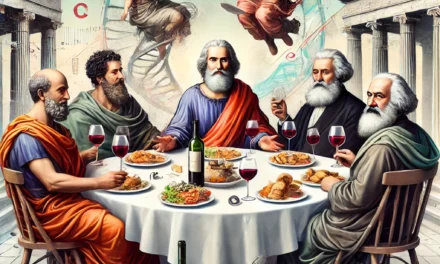


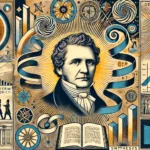



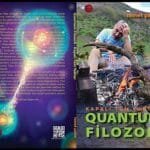






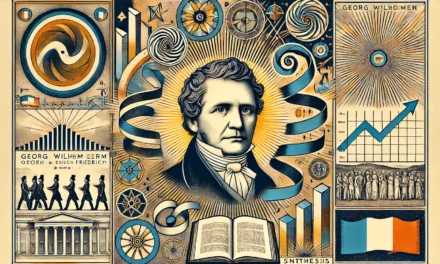
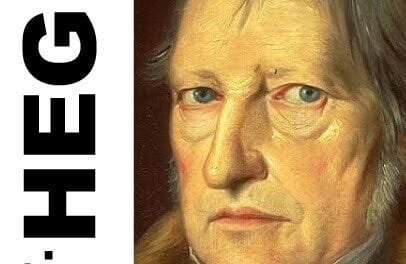
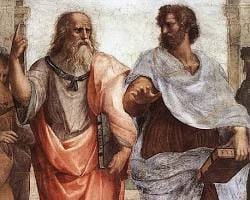





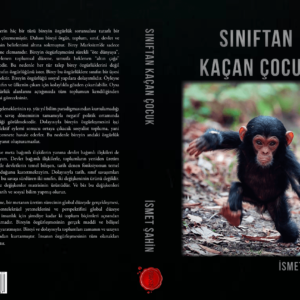
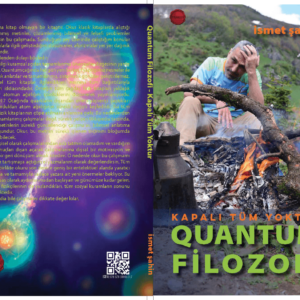
Trackbacks/Pingbacks